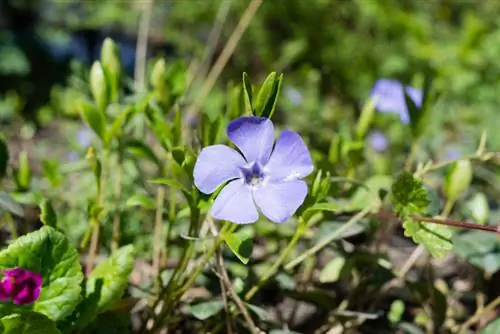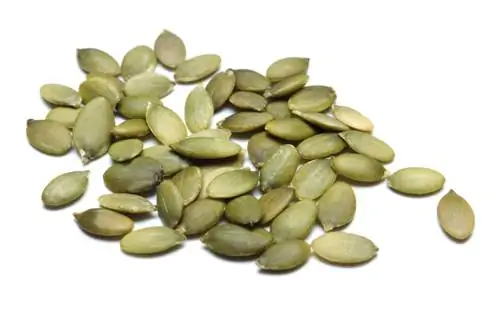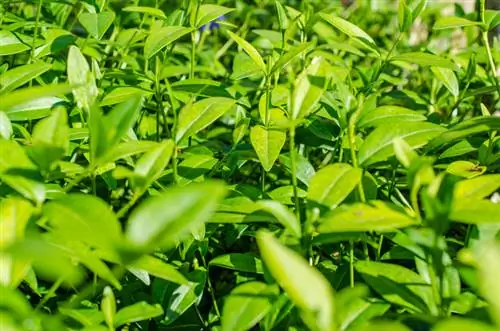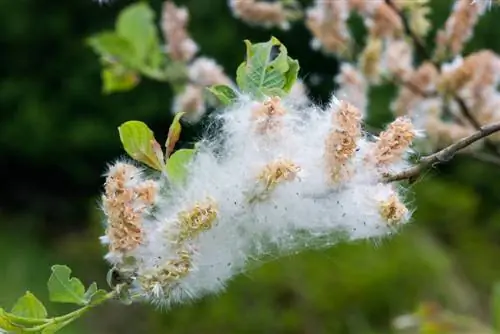- Author admin [email protected].
- Public 2023-12-16 16:46.
- Last modified 2025-01-23 11:20.
The periwinkle and especially the small-leaved and low-growing subspecies Vinca minor are often used as ground cover for green carpets of plants. Since a certain amount of plants is required depending on the chosen planting distance, you could think about growing evergreens from seeds.
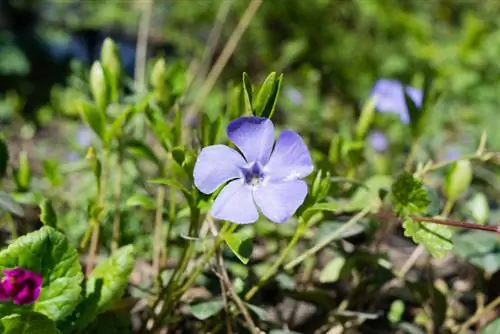
How to grow periwinkle from seeds?
Growing periwinkle (Vinca minor) from seed is difficult because it rarely produces seeds. To sow evergreens successfully, you need constant and ideal conditions such as temperatures between 20 and 25 degrees Celsius, sufficient moisture and light. A simpler propagation method is to use cuttings or cuttings.
Growing periwinkles from seeds
Growing evergreens from seeds is not that easy and can lead to frustration for some gardeners. In order for the plants to actually mature to the plantable size, all factors such as temperature must be taken into account. Moisture supply and light incidence correspond exactly to the requirements of the plants. If you want to try it yourself, you should sow the seeds under glass between February and April, at temperatures between 20 and 25 degrees Celsius. About three to four weeks after sowing, the young plants should be large enough to be pricked out at a distance of about 3 cm. Towards the end of May, the home-grown evergreen plants can then be planted outdoors.
Why small periwinkle seeds are relatively difficult to find
Since periwinkle is relatively easy to propagate, young plants are available relatively cheaply in various varieties from specialist garden shops. However, evergreen populations in nature and in the garden are relatively scattered and concentrated in a small area in one location. This is because the periwinkle rarely forms seeds. If at all, Vinca minor only fruits on karst soils and in extreme drought. Otherwise, this creeping subshrub tends to spread through side shoots, which can quickly form new roots when they rest on the ground.
The alternative for propagating evergreens: offshoots and cuttings
Propagate the small periwinkle Vinca minor yourself is easy. To do this, individual rooted offshoots of the plants are simply dug up in the spring and replanted in another location. If the periwinkle grows too much in a certain place, the material obtained from pruning can also be used to grow cuttings. Please note the following information:
- Enrich new locations to be planted with compost as fertilizer
- Water cuttings well in the first few weeks after division
- propagation should not take place too late in the year (so that the young plants are sufficiently hardy)
Tip
If sowing Vinca minor seeds does not work, this may be due to fluctuating germination conditions. Then you can try a special method and pack the seeds sown in moist peat pots in transparent plastic bags to create uniformly moist climate conditions.

